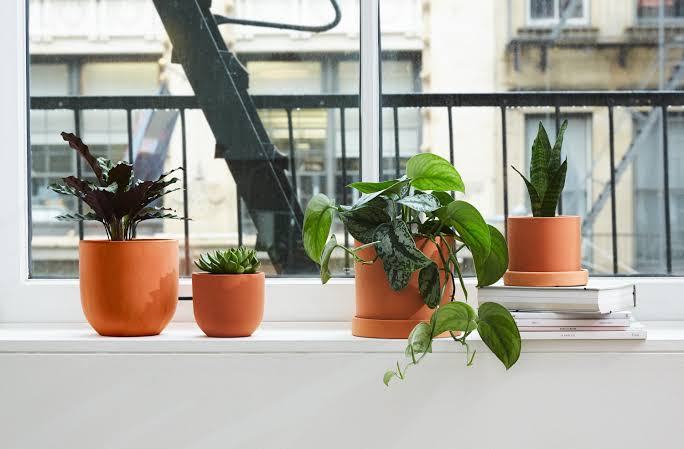In today’s fast-paced world, where many of us spend a significant portion of our time indoors, the desire to bring a touch of nature into our living spaces has never been stronger. Indoor plants not only enhance the aesthetic appeal of our homes and offices but also offer a myriad of health benefits, from purifying the air to boosting our mood and productivity.
However, for these green companions to thrive inside, they require proper care and attention. In this comprehensive guide, we’ll explore a variety of tips and tricks to help you become a master of indoor plant care.
Know Your Plants:
Before diving into caring for indoor plants, it’s crucial to understand the specific needs of the plants you have or intend to bring into your space. Different plants have varying requirements for light, water, humidity, and temperature. Some popular indoor plants like spider plants, pothos, and snake plants are known for their resilience and ability to thrive in low-light conditions, making them ideal choices for beginners.
Provide Adequate Light:
Light is essential for photosynthesis, the process by which plants convert light energy into chemical energy to fuel their growth. Most indoor plants prefer bright, indirect light. Place them near windows or in well-lit areas of your home, but avoid exposing them to direct sunlight, which can scorch their leaves. If natural light is scarce, consider supplementing with artificial grow lights designed for indoor plants.
Establish a Watering Routine:
Proper watering is perhaps the most critical aspect of indoor plant care. Overwatering can lead to root rot and other moisture-related issues, while underwatering can cause wilting and stunted growth. Before watering, check the soil moisture bysticking your finger about an inch into the soil. If it feels dry, it’s time to water. Be sure to use room-temperature water and avoid letting your plants sit in water-filled saucers, as this can promote root rot.
Monitor Humidity Levels:
Indoor settings frequently lack the humidity levels found in the native habitats of numerous houseplants. To elevate humidity, particularly in the dry winter season or in regions with notably arid conditions, employing a humidifier or positioning a tray filled with water and pebbles adjacent to your plants can be beneficial.
Another method is misting the foliage intermittently using a glass spray bottle. However, exercise caution to avoid excessive moisture, which may foster fungal diseases.
Maintain Optimal Temperature:
Most indoor plants thrive in temperatures similar to those preferred by humans—around 65-75°F (18-24°C) during the day and slightly cooler at night. Avoid placing plants near drafts, air conditioning vents, or heaters, as sudden temperature fluctuations can stress them out. If your home tends to get too hot or too cold, consider using a thermostat to regulate the indoor climate.
Fertilize Regularly but Sparingly:
While soil provides essential nutrients for plant growth, indoor plants may benefit from occasional fertilization during their active growing season (usually spring and summer). Choose a balanced, water-soluble fertilizer specifically formulated for indoor plants, and dilute it to half or quarter strength to avoid overfertilizing, which can lead to fertilizer burn. Always follow the instructions on the fertilizer package and fertilize less frequently during the plant’s dormant period in fall and winter.
Prune and Groom:
Regular pruning and grooming not only help maintain the shape and appearance of your indoor plants but also promote healthy growth. Remove dead or yellowing leaves, spent flowers, and any leggy or overcrowded growth to encourage new growth and improve air circulation around the plant. Use clean, sharp pruning shears or scissors to make clean cuts, and sanitize your tools between plants to prevent the spread of pests and diseases.
Keep an Eye Out for Pests and Diseases:
Despite your best efforts, indoor plants are still susceptible to pests like aphids, mealybugs, spider mites, and scale insects, as well as fungal infections and bacterial diseases. Inspect your plants regularly for any signs of pests or diseases, such asyellowing leaves, sticky residue, webbing, or unusual spots. If you notice any problems, isolate the affected plant immediately to prevent the infestation from spreading, and treat it promptly with organic or chemical solutions as needed.
Repot When Necessary:
As indoor plants grow, they may outgrow their containers or deplete the nutrients in their soil. Repotting allows you to refresh the soil, provide more space for root growth, and rejuvenate the plant. Look for signs that your plant needs repotting, such as roots growing out of the drainage holes, soil drying out quickly, or the plant becoming root-bound. Choose a pot that is slightly larger than the current one, with drainage holes to prevent waterlogging, and use a well-draining potting mix suited to your plant’s needs.
Practice Patience and Observation:
Finally, remember that caring for indoor plants is a journey that requires patience, observation, and a willingness to learn from both successes and failures. Pay attention to how your plants respond to different care practices, and adjust your routine accordingly. Don’t be discouraged by setbacks—every plant parent faces challenges along the way. With time, dedication, and a little green thumb magic, you’ll soon become adept at nurturing thriving indoor greenery.
In Conclusion
Indoor plant care is both an art and a science, requiring attention to detail, a deep understanding of plant needs, and a passion for fostering growth and vitality. By following the tips and tricks outlined in this guide, you’ll be well-equipped to create a lush, vibrant indoor oasis that not only beautifies your surroundings but also enriches your life with nature’s soothing presence. Soroll up your sleeves, grab your watering can, and let the green adventure begin!

